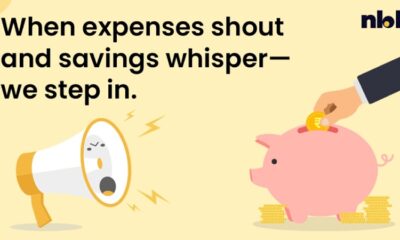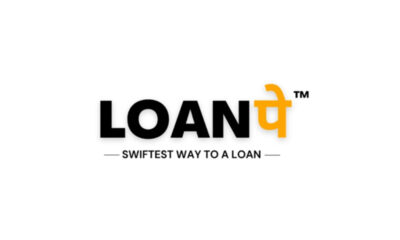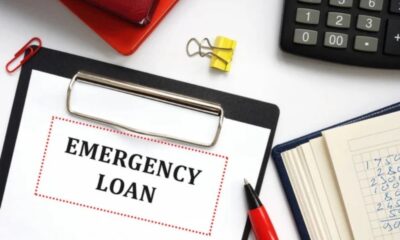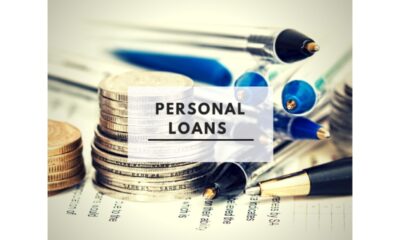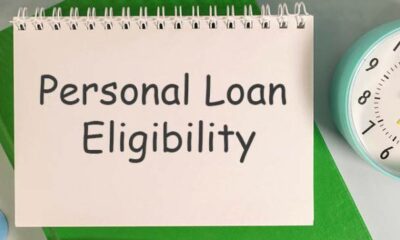Business
8 Different Personal Loan Types, Their Purposes, and 5 to Avoid
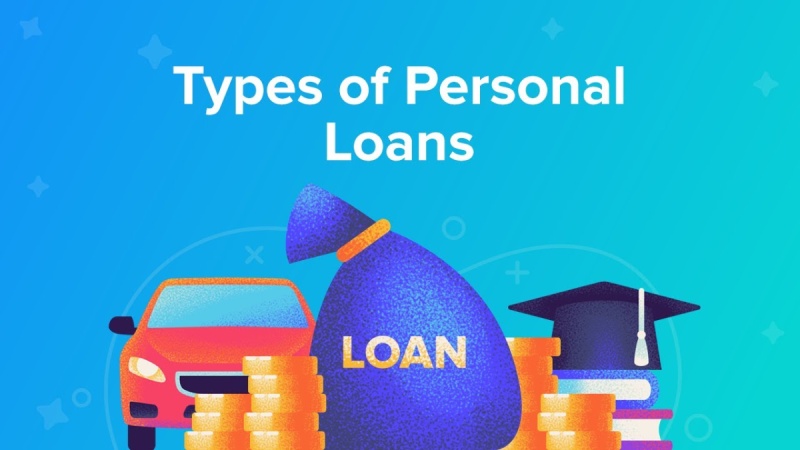
Online lenders, credit unions, and banks offer both secured and unsecured personal loans. There are numerous personal loan options available for a variety of uses.
If you’re thinking about taking out a personal loan to consolidate debt or overcome a financial setback, you’re not alone. The average consumer owes approximately $19,402 on personal loans. However, certain personal loans perform better than others based on your credit history and financial circumstances.
Types of personal loans
Rates, terms, and types of personal loans are extremely customizable, catering to a wide range of credit profiles.
Become aware of your credit score before applying. Your decision regarding a personal loan—secured or unsecured—as well as whether to go with a joint or co-signed loan will be made easier by this.
Before applying, you must possess a well-defined understanding of your financing requirements and financial goals. The best loan type for you will become even more narrower as a result.
You might be able to decide where to begin your search with its assistance. Online lenders, credit unions, and various banks offer various personal loans.
Unsecured personal loans
Collateral is not needed to approve an unsecured personal loan. Income and credit score are factors in qualifying.
Because of this, in order to be approved for the best rates, you usually need good or excellent credit.
Some lenders also take into account your educational background and work history.
With an unsecured personal loan, you won’t be at risk of losing anything material. However, you will damage your credit. If you are unable to repay, you might also be subject to expensive fees and legal action.
Secured personal loans
Secured personal loans need collateral to be approved, just like mortgages and auto loans. A secured personal loan may be secured by a savings account or a certificate of deposit (CD) as opposed to a vehicle or home.
The lender bears less risk because the loan is secured, and as a result, the interest rate may be lower than it would be for an unsecured personal loan. The drawback is that you run the danger of forfeiting the asset you pledged as collateral if you default. This is due to the lender’s legal right to seize it to reduce what you owe.
Debt consolidation loans
Debt consolidation loans are used to reduce interest rates and pay off outstanding debt balances more quickly. By consolidating several loans into a single monthly payment, borrowers also benefit from a streamlined repayment process.
The goal is to take out a loan that has an interest rate that is less than what you are now paying on the debts you intend to consolidate, such as credit card, medical, and other bills. During a predetermined amount of time, you will use the loan to settle those balances and make payments on a new loan product.
There could be costs associated with your new loan, like an origination fee, which could reduce your savings. Additionally, to avoid getting into more debt, make sure you have a plan in place for managing your loan.
Co-signed and joint loans
A lender may approve you for a personal loan if you don’t qualify for one on your own and you have a creditworthy co-signer.
Your co-signer must be prepared to give up access to the funds in exchange for taking on equal responsibility for the loan. They also need to be able to pay back the loan with their earnings.
In the event that you miss loan payments and they are unable to make up the difference, both of your credit scores will drop.
Additionally, some lenders provide joint loans, which let both borrowers access the money from the loan. Both parties will be responsible for loan payments, just like with co-signed loans. To increase the likelihood that your loan application will be accepted, your co-borrower must have good or exceptional credit.
Fixed-rate loans
The interest rate on fixed-rate loans remains constant during the repayment period. Throughout the term of the loan, you make the same monthly payment, with a portion of each payment going toward the principal and interest.
This category includes the vast majority of personal loans. When you take out a fixed-rate personal loan, it is simple to budget appropriately because the payments don’t fluctuate over time.
Variable-rate loans
A variable-rate loan’s interest rate is subject to change depending on the state of the market. On the other hand, compared to a fixed-rate loan, you might be able to get a lower APR on a variable loan.
Naturally, the drawback is that your variable rate might go up. The fact that variable-rate loan payments fluctuate over time may make budgeting for them more difficult. To pay it off quicker and reduce the chance of the interest rate going up too much, you might want to consider taking out a shorter-term loan.
Personal line of credit
Like a credit card, a personal line of credit allows you to have access to a bank of money that you can draw from as needed. Interest will only be charged on the amount borrowed.
For those who prefer a better rate than a credit card but still want flexible access to funds, this might be a good choice. For ongoing emergencies, renovations to the kitchen or bathroom, or overdraft protection, a line of credit might be useful.
Personal lines of credit can be secured by a banking asset and usually have variable rates, but smaller banks or online lenders may have unsecured options as well.
Buy now, pay later loans
Buy now, pay later loans With the help of loans, you can make purchases without having to pay the full amount up front. Rather, the remaining amount is split and paid in equal installments; the entire amount is normally expected to be paid within six weeks of the purchase date.
These loans are frequently made available via smartphone apps like Affirm, Klarna, and Afterpay. The majority of lenders will look over your bank account activity and might even run a soft credit check, which has no effect on your credit score.
This implies that if you have the income to support the payments, you could be approved for a buy now, pay later loan even with less-than-perfect credit.
While late payments on BNPL loans might be reported to the credit bureaus, on-time payments are not usually. This implies that rather than raising your credit score, this kind of funding is more likely to lower it. Avoid the urge to go overboard with purchases or take out more BNPL loans than you can manage.
Types of loans to use sparingly
Use personal loans as a last resort only because some have astronomically high interest rates. Borrowers who lack access to a bank account or have poor credit may have limited options.
You should avoid them if at all possible. If you are unable to pay off the loan quickly, make sure you stay up to date on your payments.
- Cash advances on credit cards: A few credit card companies let you withdraw money in cash from your available credit at a bank or ATM. This benefit has a high price tag. A cash advance fee and a higher interest rate on the loan amount will probably be imposed.
- Cash advance apps: These also provide quick access to funds, typically up to $250, until your next pay period. The majority of lenders have monthly fees for using their services, and you must pay back the money you borrow within two weeks or on your next payday.
- Payday loans: Designed for borrowers with bad credit, these expensive loans are a type of debt. Payday loans usually have high interest rates exceeding 300 percent along with steep fees. If you are unable to make the payments and wind up having to extend the loan term, they may result in a hazardous debt cycle.
- Pawnshop loans: You can exchange your asset for cash if the pawnshop in your area offers loans. If you don’t pay back the loan, the pawnshop will keep your belongings and you will probably have to pay a lot of interest.
- Title loans: The title to your car is used as collateral for a title loan. Lower interest rates than with unsecured loans are possible because you are borrowing against the value of your car. But, if you miss any payments, you run the danger of paying hefty fines or possibly losing your car.
Conclusion
One can select from a variety of personal loan kinds. Each has advantages and disadvantages. Know what to expect and how personal loans operate before you apply. Make careful comparisons between lenders to make sure you choose the best personal loan option for you.
-

 Travel4 weeks ago
Travel4 weeks agoBwindi’s Gorilla Tourism: Saving Wildlife, Empowering Communities
-

 Education4 weeks ago
Education4 weeks agoJoseph Curran: Using Legal Writing and Advocacy to Simplify Complex Issues for Clients
-

 Tech4 weeks ago
Tech4 weeks agoGoogle Offers New Travel-related Features To Search And Launches Its AI “Flight Deals” Tool Around The World
-

 Business4 weeks ago
Business4 weeks agoStop the Bleeding: How Unanswered Comments Increase Your CAC
-
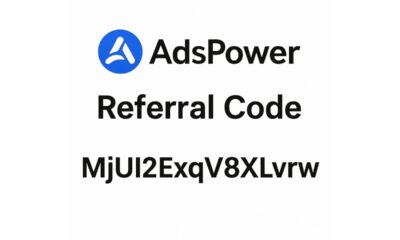
 Tech3 weeks ago
Tech3 weeks agoAdsPower Promo Code for 50% Off – Ultimate Guide to AdsPower Benefits (Referral Code Included)
-

 Cryptocurrency2 weeks ago
Cryptocurrency2 weeks agoRami Beracha Asks, Can Israel Become A Global Leader In Blockchain Innovation?
-

 Education2 weeks ago
Education2 weeks agoForged in Fire: Nicholas Lawless Unveils Lawless Leadership – The Model Built for a World That Traditional Leadership Can’t Survive
-

 Business2 weeks ago
Business2 weeks agoOPO Group LTD Strengthens Its Global Footprint With Expanding Offices and a Modernized Trading Ecosystem

